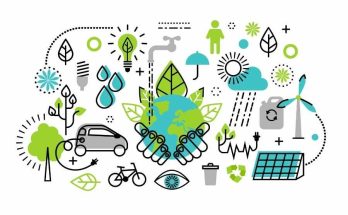By Alejandro Angulo
Let’s start by agreeing that the degree of a country’s development depends on the energy its citizens consume. The amount we consume per hour and per day is 60 times greater now than that of our ancestors some 10,000 years ago, thanks to technological and social development.
“Pemex Hila Second Month with Record Natural Gas Extraction.” Large-scale extraction and combustion of coal, oil, and natural gas is above 5 billion cubic feet per day. This volume exceeds February’s figure and has not been achieved since June 2017, according to official figures from the National Hydrocarbon Commission (CNH). This points to an important change in the intensity of the different uses of energy.
On the one hand, solar energy has given us access to concentrated and easily stored energy resources, which are being used at an increasing rate. On the other hand, the use of fossil fuels has allowed the limits of energy consumption to be exceeded, the result of the low efficiency of photosynthesis and the low yields of water and air currents. Hydrocarbons have increased the use of primary energy (biomass, fossil fuels, and nuclear energy) without precedent.
From 1950-2019 the planet has multiplied its energy consumption by over five times. In this period GDP grew almost seven times, and the world’s population doubled. In 2019 alone, according to the Mexican government, it is estimated that energy consumed from hydrocarbons was 81%.
Today’s high consumption of hydrocarbons or carbon-rich fuels has led the world to a climate emergency in the face of the challenge of global warming by more than 1.5°C by 2030. This has resulted in restrictive mitigation measures. One is the path of energy transition, which implies: a) decoupling economic and demographic growth from the increase in CO2 emissions; b) moving towards an economy with low emissions and energy efficiency; and c) deployment of policies and technologies that lead to a circular CO2 economy.
According to the Intergovernmental Maritime Consultative Organisation’s (IMCO) International Competitiveness Index for 2021 and 2022, Mexico was ranked 36th and 33rd respectively in relation to non-polluting energy sources. In other words, it advanced three places on the international table, but this is not yet considered enough to me yet.
It is clear that the energy transition in Mexico will be expensive and will be difficult, given the country’s ample reserves of oil, coal, and natural gas. Mexico’s total hydrocarbon reserves increased 4.16% as of January 1, 2023, compared to the end of the previous year, reaching 23.081 million barrels of crude oil equivalent, according to the National Hydrocarbons Commission. In addition, oil exports are a fundamental part of Mexico’s income and national GDP.
In the State of Querétaro, mitigation measures will not be enough to reduce emissions. It will still be necessary to expand the energy supply to accommodate the industrial sector, which requires the most energy. Since we depend most on energy, it is necessary to accelerate generating it from renewable and clean sources.
On the one hand, we have citizens who have adopted clean energy based on generating energy with solar photocells in buildings (the state ranks 13th in photovoltaic clean energy). The state government and the municipality of Querétaro are promoting projects to provide small and medium-sized companies with solar panels, but the private initiative has yet to join in promoting clean energy-generating plants, even on a distributed energy scale of up to 500kW.
Querétaro enjoys a comparative advantage in terms of solar irradiation (number of intense and sunny days per year) that it should take advantage of, especially from an energy geopolitical perspective; in the near future, the Mexican states that will advance in economic development will depend on the availability of energy to citizens concentrated in cities and metropolises, as well as for the productive processes that generate economic growth (industry).
Another important area of research that must be promoted is using energy from urban waste and wastewater, and geothermal energy, which is incipient and promising.
Querétaro’s position in geographical terms is key, but the role it plays in industrial development in the country is more so. The focus of energy geopolitics is needed today more than ever, especially if we accept, as I pointed out at earlier, that the degree of development of a country depends on the energy consumption of its citizens. Let’s keep in mind that in the State of Querétaro, energy poverty is not significant, which indicates that the vast majority of citizens consumes energy for various uses.
In the history of the industrial development of Querétaro (the textile and nixtamalization industries) it was critical to have energy. Without it, the history of the development of the state would have been different. In that period of growth and development there were several local sources of energy within the state (among them, dams). Dams are no longer relevant, hence the importance of achieving state energy sovereignty in solar irradiation and a diversified matrix of energy sources so as not to be dependent on external energy.
Two strategies are in sight: energy efficiency that will make the industrial sector more competitive while advancing in the decarbonization of the economy, and increasing the supply of clean energy based on solar radiation, which contributes to the reduction of CO2 emissions.
Energy is development and power.




